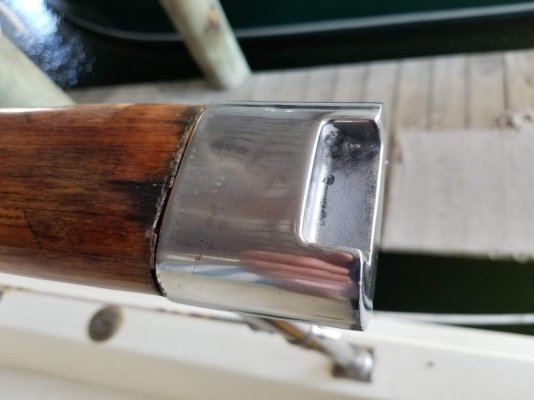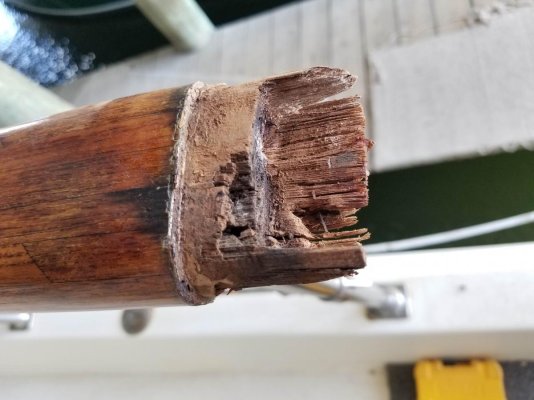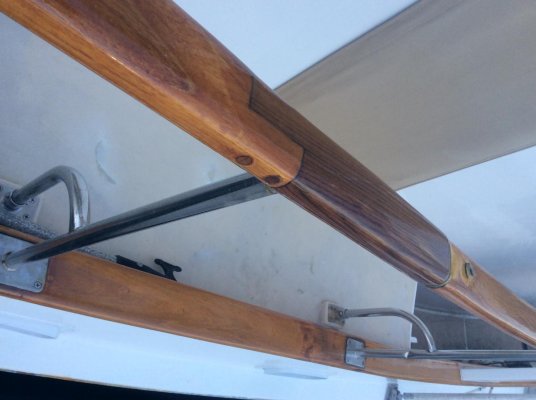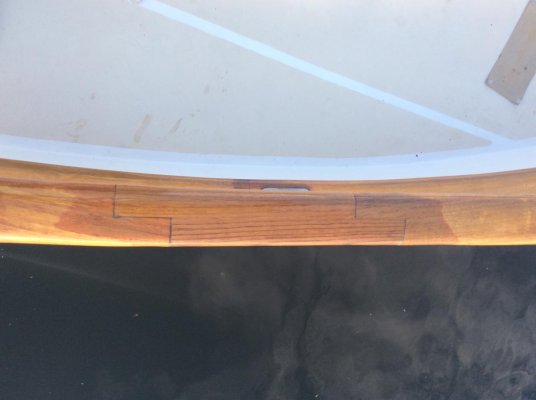GregBrannon
Guru
I have a wood railing around the bow with a gate on each side. I've always been aware that the gate hardware on the starboard side is loose. I tried to tighten the two screws that hold the hardware firm and noticed there wasn't much wood left for the screws to hang onto. I then took off the loosest piece of hardware and discovered there isn't much wood left.
My initial thoughts of filling in the weak spots with an epoxy wood filler and reshaping may not be sufficient. I'm not confident that there's enough wood left for a filler to hang onto. Would a reasonable approach be to cut off nearly everything that goes inside the hardware and attach a replacement to the remaining railing with long, countersunk screws, possibly one screw on each side with a third in the middle? Is there a better approach?
Thanks for your help.
Here's the railing with the latch hardware on:

This shows the top of the railing with the hardware removed:

And this is the bottom of the railing with the hardware removed:

My initial thoughts of filling in the weak spots with an epoxy wood filler and reshaping may not be sufficient. I'm not confident that there's enough wood left for a filler to hang onto. Would a reasonable approach be to cut off nearly everything that goes inside the hardware and attach a replacement to the remaining railing with long, countersunk screws, possibly one screw on each side with a third in the middle? Is there a better approach?
Thanks for your help.
Here's the railing with the latch hardware on:

This shows the top of the railing with the hardware removed:

And this is the bottom of the railing with the hardware removed:




